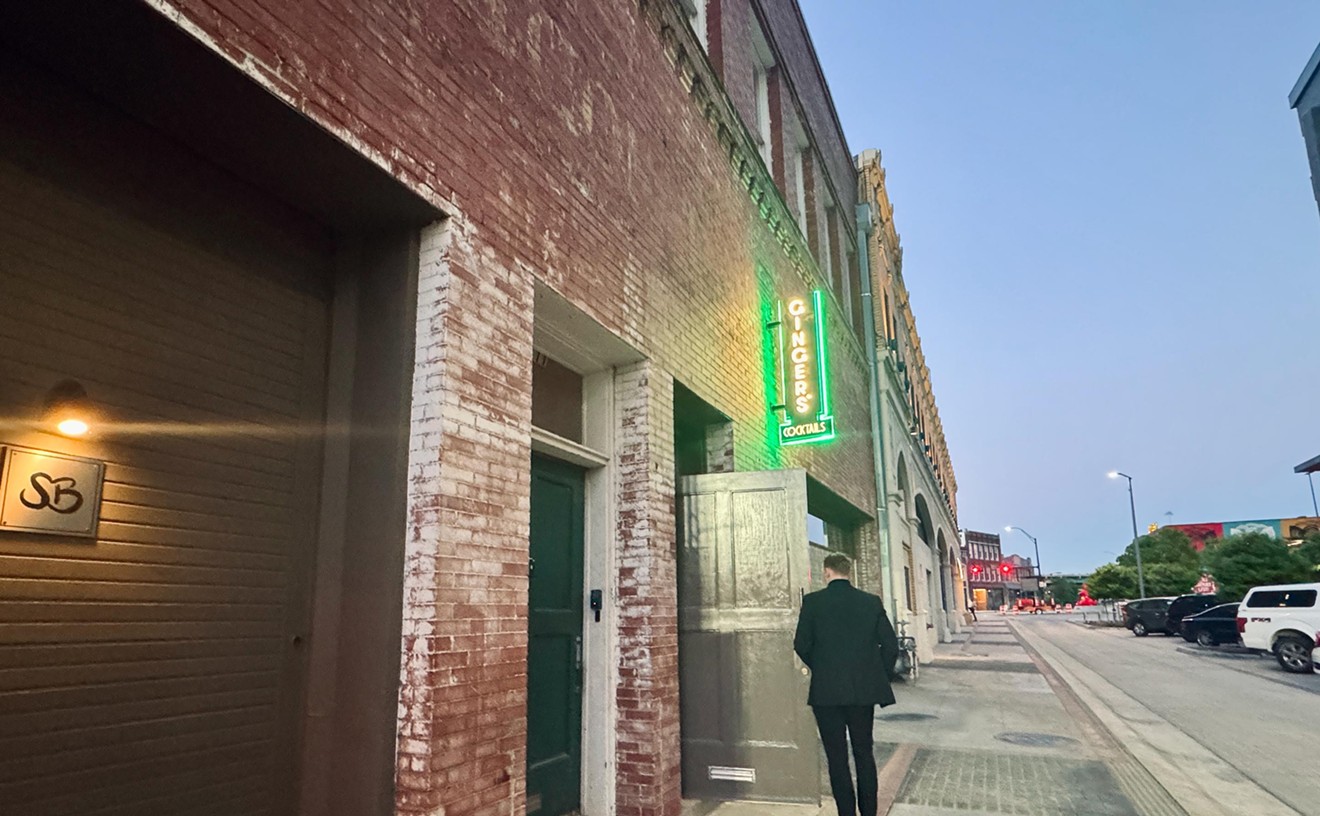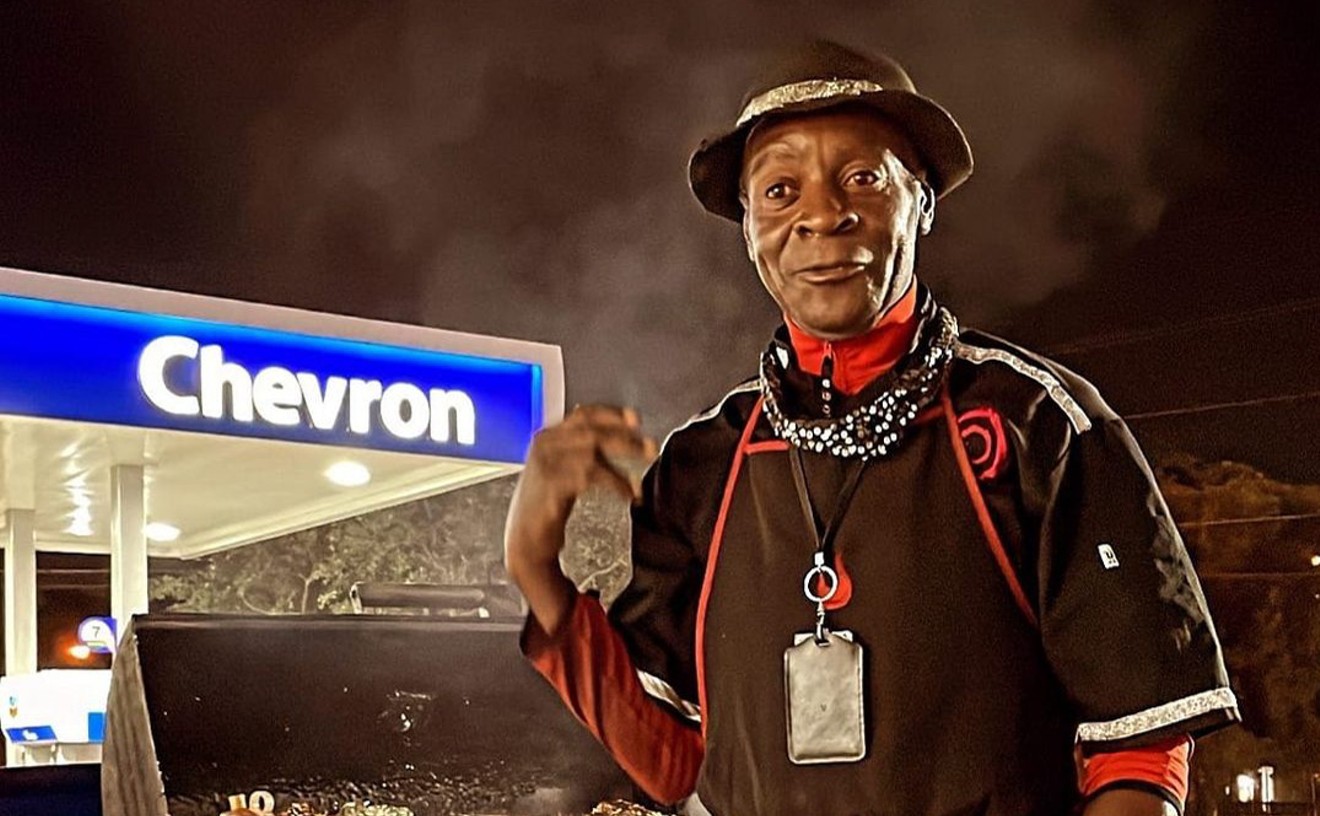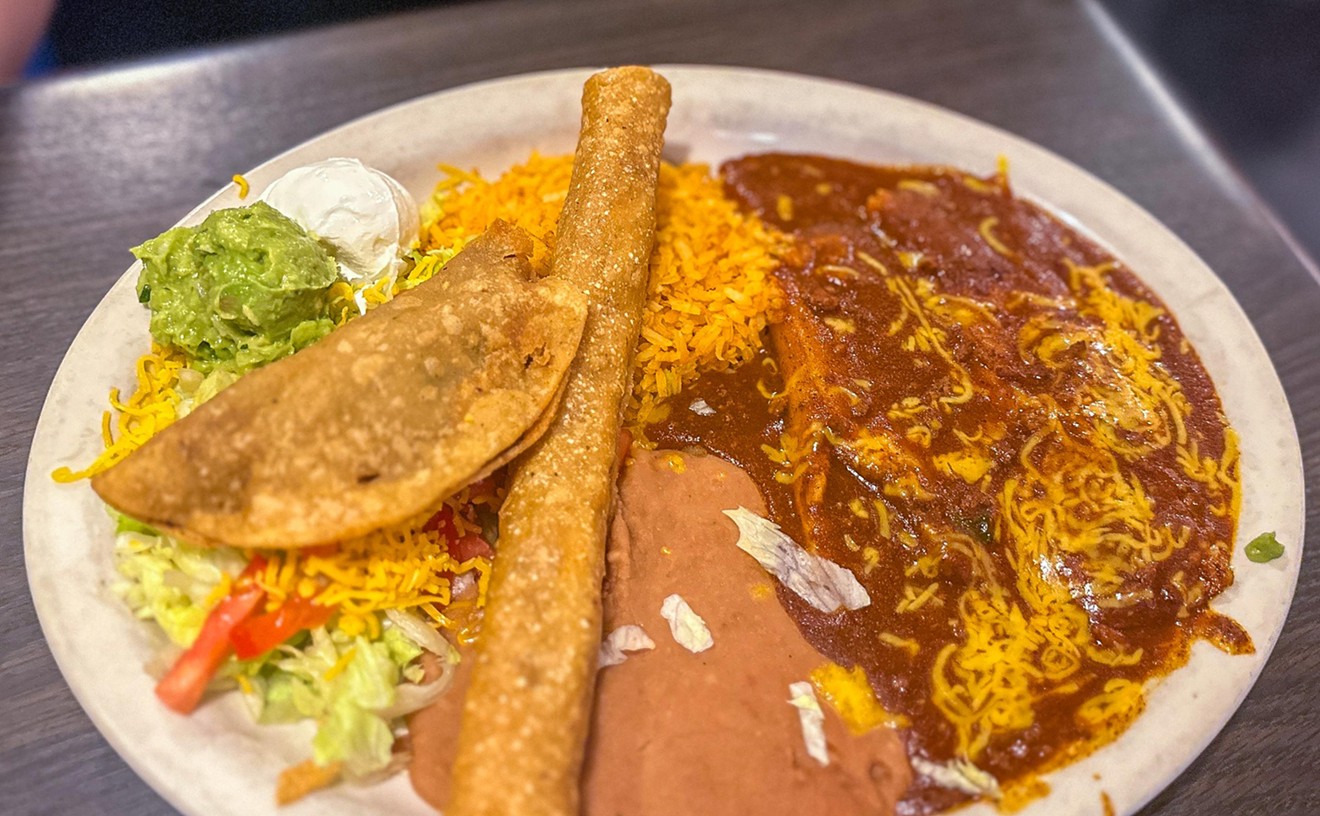Unfortunately, NBC canceled only Emeril's acting career. The Bam!-bino still appears on the Food Network for about 15 hours a day.
Now, the Burning Question crew despises Emeril, as much for his success as anything, and we once resolved never to mention his name in this space. But he's a perfect introduction to this week's answer, and, well, it's just one violation of our vow, so we're pretty much absolved of any wrongdoing. You see, each night, the man of the ubiquitous catchphrase stands alone behind the counter, chopping, peeling, sautéing, grilling and kicking things up a notch all by himself. Our mental construction of the chef confirms this scenario. Restaurant patrons typically define the position as an odd amalgam of cook, artist and sage, a person who prepares all the ingredients, creates brilliant flavors from a few items and perorates eloquently on international cuisine.
Many chefs, such as Gilbert Garza of Suze or David McMillan of Nana or a dozen others scattered across the Dallas area, could legitimately be labeled food artists. A few possess insufferable egos. And several discuss culinary matters with great insight and subtle discrimination.
But do chefs really prepare your meals?
"A lot of people really believe that I personally cook every meal that comes out of both restaurants," chuckles James Neel, chef-owner of Tramontana and Bistro Latino. "That's obviously impossible."
A professional kitchen in the throes of dinner rush resembles the frenzied order of a pit stop during a NASCAR race. Someone must maintain both staff composure and food quality in the midst of chaos, then restock the kitchen and plan activities for the next rush. "The chef makes sure everyone is prepping properly; he's checking the marinade, anticipating different ingredients," says Al Biernat, owner of Al Biernat's. "He's in charge of timing for 220 people, for making sure that everyone has the same experience. He's also the guy pricing out the kitchen, doing payroll, ensuring product quality. He can't just be working one station."
In other words, running a professional kitchen is a time-consuming and nerve-racking task. "I have a duplex I haven't seen in a year," reports Chris Svalesen, chef of Thirty-Six Degrees. "I'm in at 9:30 in the morning and leave at 11:30 at night. Then there's charity work and cooking classes on my days off." Thus few chefs can afford to spend much time before the stove.
"I have my hands on the specials," says Marc Cassel, executive chef of the Green Room, "but menu items are prepared by station cooks."
Line cooks, or station cooks in Cassel's vernacular, actually cook your food in most establishments. The line is composed of a cook or two for each technique--grill, sauté, salad and so on--or type of food. "There are a lot of talented people making the chef look good," Biernat says.
By concentrating on one station or ingredient each, line cooks allow the chef some freedom of movement. "As important as it is to be in the kitchen, it's important to be out front, as well," Neel explains. "So we train people to cook how we want it done." The chef often must demand strict adherence to recipes and processes during training, which occurs with each menu change, but also must earn the respect of his or her cooks by jumping on the line and performing the task with requisite skill. Once everyone is clear, chefs claim, no customer can tell whether the chef or a line cook prepared the dish.
"Most of the work is the prep, the mise en place," Svalesen says, referring to a professional term for a station set up with all ingredients handy. "Once you show the guys how to do it, they do it the same way every time."
Chefs also taste everything prior to opening. Neel, for example, grabs a handful of spoons and roams through both his restaurants. He often ends up sprinkling a bit more salt on one item, adding a dash of vinegar to another and so forth. Many of his cooks are Hispanic--as are close to 20 percent of all food-service employees nationwide--and culturally unfamiliar with the taste and texture nuances of Tramontana's European-influenced cuisine. Others come from prior gigs in Asian or Mexican restaurants. "Their palates aren't always the same. That's why they need us."
Most cooks step into low-level prep positions before moving up to the line and real money--at least the equivalent of Burning Question crew wages: $7.50 to $8.50 an hour, on average. High turnover rates among kitchen staff force chefs to keep an eye on stellar cooks, even those at other restaurants. The good line cooks work their way up into sous chef positions.
"You can make the analogy to manager and assistant manager," Cassel says. "Sous chef just means the assistant chef."
Auguste Escoffier established modern kitchen hierarchy after serving as--get this--chef de cuisine of the French Army during the Franco-Prussian war in 1870. It's difficult to picture the great Escoffier spooning out shit-on-a-shingle to French soldiers before they marched off to surrender, but it's true. Well, maybe not the SOS part. But the simplified, streamlined approach he created allows chefs to greet guests in the dining room, assist with any problem areas and expedite orders.
Expediting is one of those unenviable tasks that can destroy a restaurant's equilibrium if it goes awry. It involves coordinating and timing the preparation and delivery of every item and every table in the establishment. It's a role often assumed by the executive chef or sous chef, as they know precisely how long it takes to cook each menu item. The expeditor calls orders out so that asparagus finishes at the same time as steak or baked potatoes at the same time as ahi tuna, and all arrive at the table simultaneously.
"It's like a chess game," Biernat says.
Some chefs do actually sweat away their evenings on the line. Svalesen, for example, generally works the sauté station and expedites. Others take an occasional turn behind the grill.
"We cook everything, in some philosophical sense," Cassel says. "We prepare the specials, the sauces, the menus. I spend some nights on the line." Besides, chefs point out that they bear responsibility for every dish that leaves the kitchen.
But does the chef prepare your particular dinner? The answer, for the most part, is no.
"You're involved in the process all day long," Cassel points out. "But as far as my tongs putting your steak on the grill, that's not happening."










